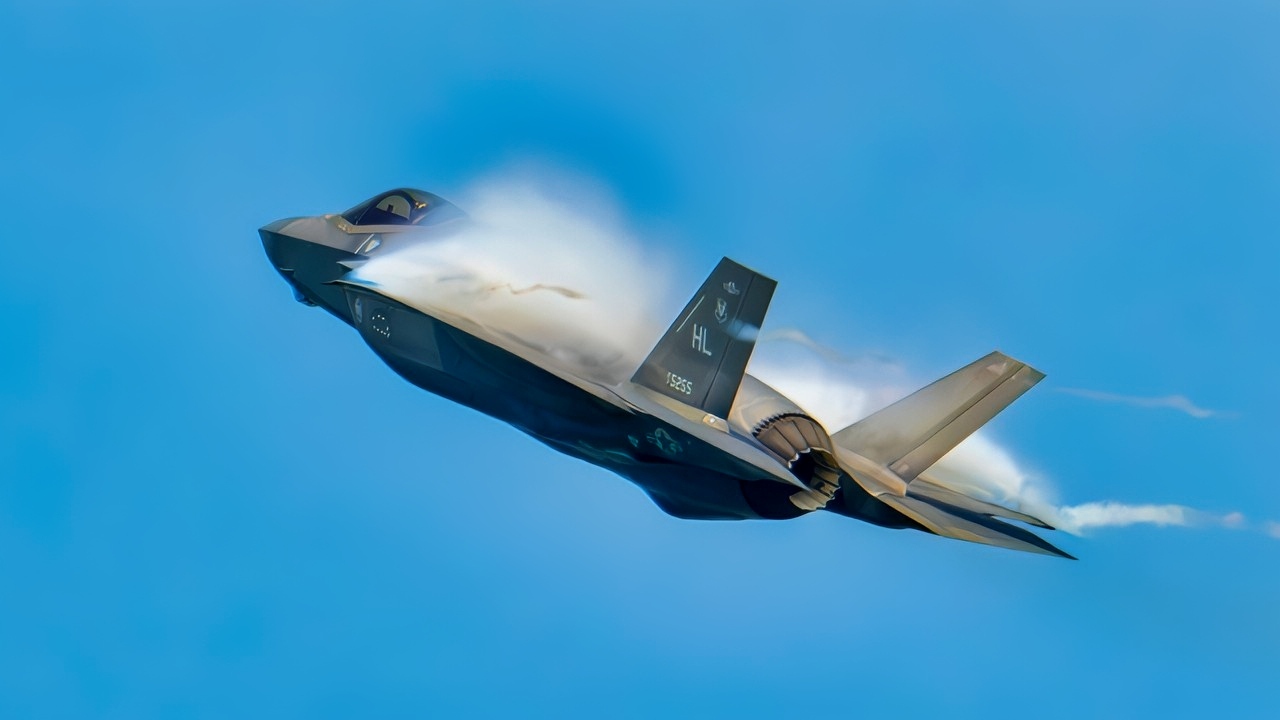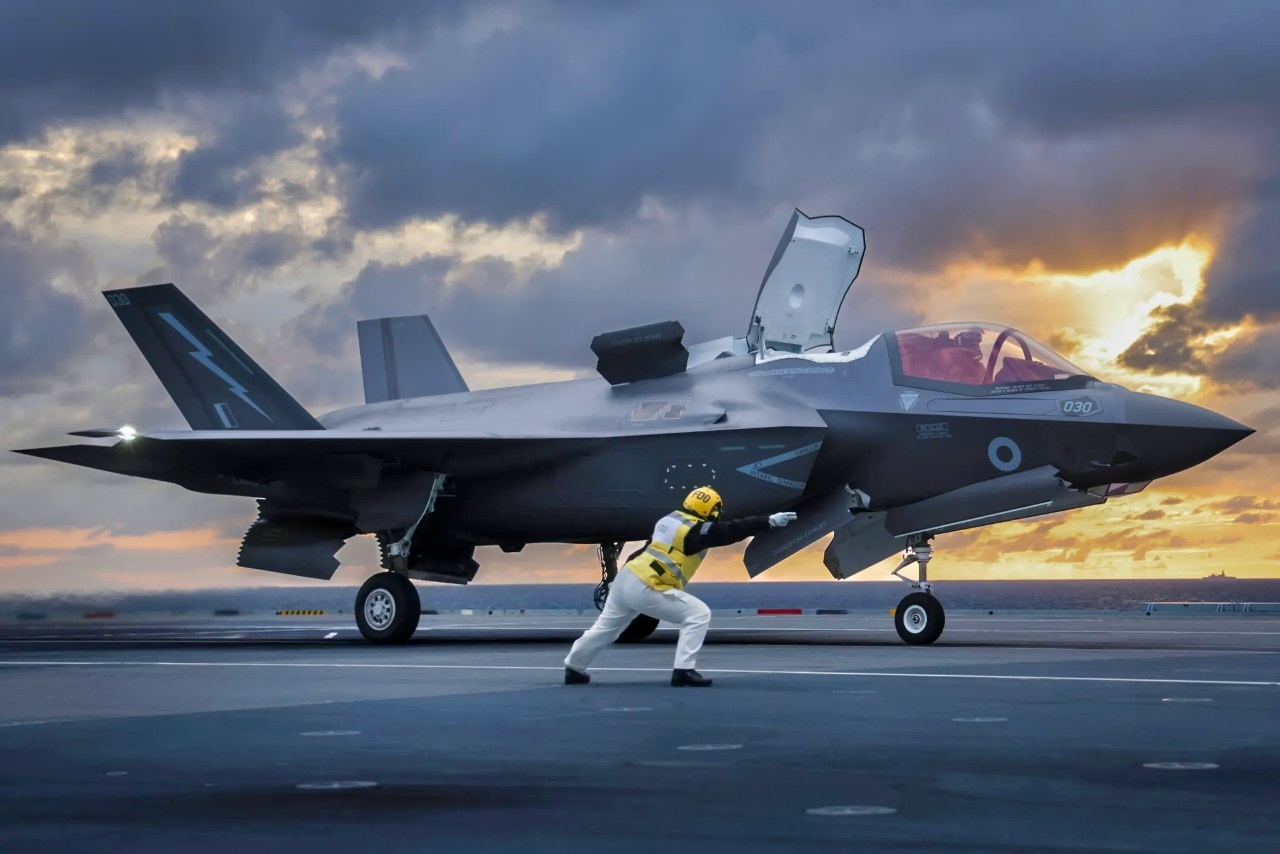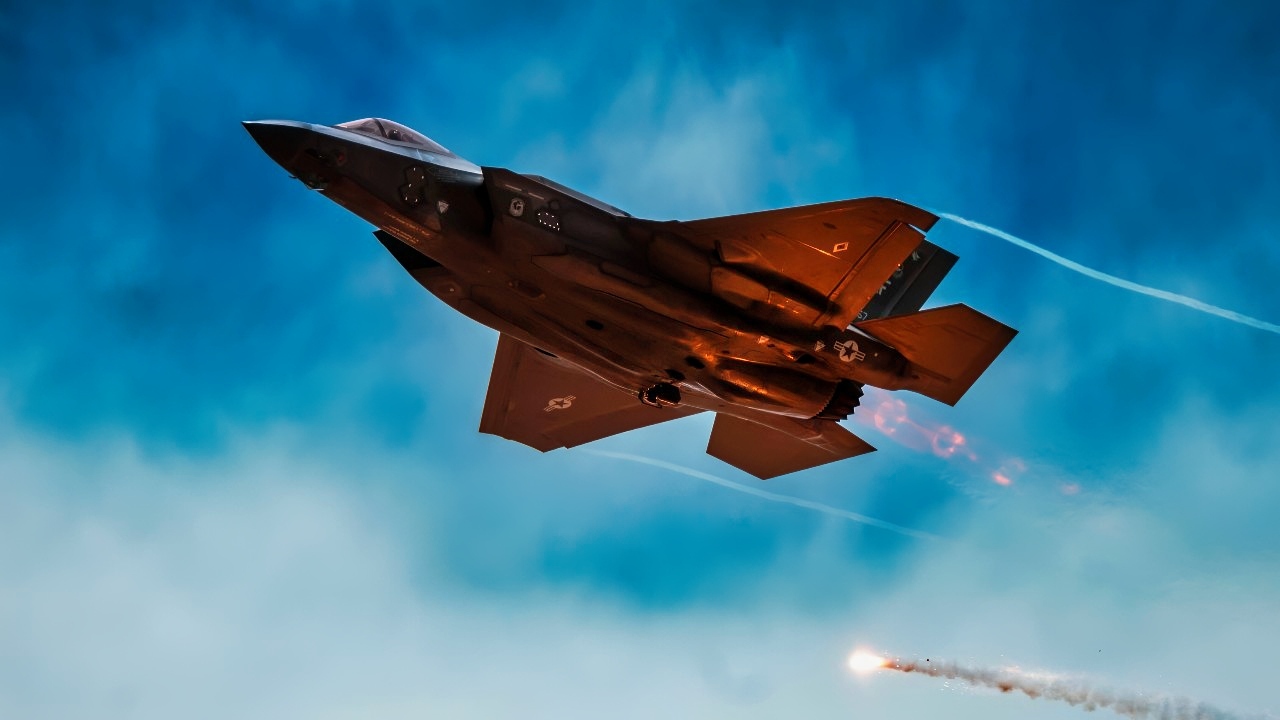Key Points and Summary – A defense of the F-35 argues that criticizing its dogfighting performance is a mistake based on an anachronistic view of air combat.
-The F-35 was not designed to win a traditional turning fight, but to prevent one from ever happening. Its core purpose is to leverage superior stealth, sensor fusion, and electronic warfare to achieve a “first-look, first-shot, first-kill” from beyond visual range.

U.S. Air Force Maj. Melanie “Mach” Kluesner performs aerial maneuvers during a demonstration at the Oshkosh AirVenture Airshow in Wisconsin, on July 25, 2025. The demonstration highlights the team’s mission to showcase the precision, agility, and combat-relevant capabilities of the F‑35A Lightning II and the professionalism of its Airmen. (U.S. Air Force photo by Senior Airman Nicholas Rupiper)
-Victory in modern air combat is about information dominance, where the F-35 excels as a networked force multiplier.
-Judging it by dogfighting metrics is fundamentally misunderstanding its 21st-century role.
F-35 Dogfighting? That Is Not the Question
Detractors of the F-35 Lightning II have been quick to point to dogfight simulations that the fifth-generation jet has been claimed to “lose” against fourth-generation fighters like the F-16 Fighting Falcon or the Eurofighter Typhoon. These incidents have served as proof of the jet’s inadequacy as an air superiority platform. This line of reasoning is predicated on an anachronistic understanding of air combat.
Part of the Fight
Such arguments posit that the ultimate test of a fighter aircraft is to be able to win in a close-range, turning dogfight against another. That is, when two opposing fighters merge (meaning they are close enough to see each other, cross the flight path of one another, and maneuver one against the other in a nose-to-nose position). The F-35 was not designed to win in that sort of fight. It was designed to ensure that adversaries never live to see the merge.
The stories of the F-35 “losing” air-to-air combat within visual range are more reflective of an outmoded view of aerial warfare than they are an indictment of the F-35 itself. The measures by which we determine these outcomes—turn rate, maximum sustainable G-load, instantaneous turn rate—are measures of a bygone era in which an ace pilot needed to generate an advantage over his opponent in a turning fight.

U.S. Air Force Maj. Melanie “Mach” Kluesner, pilot of the F-35A Demonstration Team, performs aerial maneuvers at the Sun ‘n Fun Airshow in Lakeland, Florida, April 4, 2025. The demonstration team showcases the skill and precision U.S. Air Force pilots and aircraft are capable of. (U.S. Air Force photo by Senior Airman Nicholas Rupiper)
Air combat today is about stealth, sensor fusion, electronic warfare, and beyond visual range (BVR) kill chains. Victory today is less about being able to turn within an opponent’s turn circle and more about denying the opponent the opportunity to get into the fight in the first place.
Testing the Turning
The available evidence from operational testing, as well as recent allied combat exercises, supports this. Indeed, tests and exercises have demonstrated a persistent asymmetric disadvantage for fourth-generation fighters when compared with the F-35’s low observability, fused sensors, and networked data-links.
The aircraft shapes the encounter based on its own design, rather than reacting to an opponent’s moves. In that first look, first shot, first kill battle for survival, stealth shaping, radar-absorbent materials, and electronic warfare integration provide a decisive advantage to the F-35.
The currently underway Block 4 modernization is only expanding this advantage. New features such as the AN/APG-85 active electronically scanned array radar, integration with more weapons, enhanced electronic warfare (EW) suites, and upgrades to the data-link system are making the jet even more lethal. These upgrades will enable the F-35 to identify, track, and engage targets within its assigned domain, as well as threats across an expanding and increasingly contested operating spectrum.
Most of the Block 4 features derive from the software code that powers the aircraft, the so-called Technology Refresh-3 (TR-3) computing upgrade. As such, the current fighter production lots are being equipped with different percentages of Block 4-capable aircraft as the new computing core is phased into the fleet. Oversight reports have confirmed that hundreds of aircraft with the TR-3 are in service, but the full spectrum of the Block 4 capabilities will not be operational until 2026.
Ready for the Fight
Incidentally, it is worth mentioning that the F-35’s turning performance is more than sufficient, should the (highly unlikely) circumstance arise that a close-in visual range encounter with another fighter occurs. The F-35 is by no means a fighter without defenses at the merge.
The F-35 is simply designed to ensure the merge never happens in the first place. The problem with judging this program by dogfight metrics is that being better at dogfighting is roughly analogous to being better at one-on-one battles between three-masted sailing ships.

Royal Navy F-35 Fighter. Image Credit: Creative Commons.
We need to be clear on the broader doctrinal implications at play here. The very concept of air superiority is changing in the twenty-first century. It is less about winning an individual engagement and more about dominating the information environment.
It is in this context that the F-35’s role becomes so important. The F-35 serves as a critical node that links together sensors, shooters, and command and control networks into an integrated system that multiplies allied forces’ effectiveness in ways that would have been unimaginable just a decade ago. It is central to this task as a force multiplier effect in action.
Arctic patrols, involving fighters, surface combatants, and ground forces, cover the high northern latitudes, where great power competition is on the rise, making this area particularly significant. In these missions, stealth and beyond visual range capability become a force multiplier to take control of the skies in a region where distances are great and where early detection can make all the difference.
Dispersion and access to short take-off and vertical landing variants have already demonstrated the ability to launch from austere and unpredictable locations, complicating targeting solutions and reassuring allies and partners.
Airborn Sustainment
At the same time, some significant sustainment issues have emerged that warrant attention. Issues over low mission-capable rates and the high costs of global sustainment have plagued the F-35, leading to allegations of cost overruns in excess of $2 trillion over the program’s lifetime as well as readiness rates below some service branches’ goals. These concerns are not without merit, and they represent serious challenges that must be addressed.
They are nevertheless logistical and tactical in nature, not strategic. In other words, they are about the nuts and bolts of implementation rather than the platform’s overall design and doctrine. They will require continued investment in the fighter’s maintenance, spares, and personnel pipeline. Again, none of this invalidates the general strategic case for the aircraft’s platform or the doctrine that underpins it.
If anything, the tenor of these debates has shown just how imperative it is to disentangle the tactical and logistical issues from the strategic case.
Dogfighting is a matter of tactics, not doctrine. The debate over this issue has been ongoing for some time. Ten years ago, the F-35 Joint Program Office called the notion of failing at close-in maneuver a red herring.
The thing is, the F-35 was never designed to be the direct successor to the F-16, or to any other existing or past US fighter. It’s a different breed entirely: designed, built, and intended to address the requirements of 21st-century air-to-air warfare by changing the air-combat environment itself. Just as the jet fighter rendered the piston-driven propeller airplane an artifact of the past, so the fifth-gen F-35 renders dogfight numbers an artifact of the past.
The Wrong F-35 Questions
The platform was never meant to win at the merge in a turning contest, but to make such a contest unlikely—and ultimately moot.
And the direction is already set: the Next Generation Air Dominance fighter, likely the F-47, will take this evolution even further, definitively sending air superiority past the dogfight generation and into a battlespace dominated by stealth, range, and networked operations.
About the Author: Dr. Andrew Latham
Andrew Latham is a Senior Washington Fellow with the Institute for Peace and Diplomacy, a non-resident fellow at Defense Priorities, and a professor of international relations and political theory at Macalester College in Saint Paul, MN. You can follow him on X: @aakatham. He writes a daily column for National Security Journal.
More Military
Seawolf-Class: The Best Submarine Ever?
The Royal Navy Has a Destroyer Stuck in Port for 3,000 Days
America Is the King of Stealth Fighters
China’s J-20 Mighty Dragon Stealth Fighter Has Just 1 Mission










